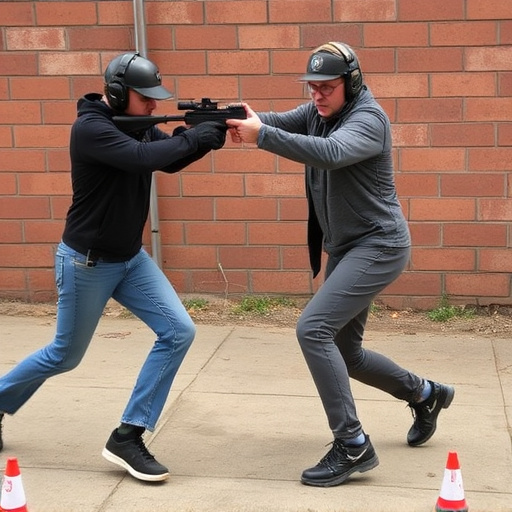This text compares rechargeable and disposable batteries for concealed stun gun flashlight combos, highlighting their pros and cons. Rechargeables are eco-friendly and cost-effective over time with longer runtime, while disposables offer instant power with minimal maintenance but contribute to waste and may lack reliability. Users should consider their needs—frequency of use, sustainability, performance—when choosing between the two battery types for reliable self-defense in these combos.
In the world of self-defense, the hidden yet powerful concealed stun gun flashlight combos have become increasingly popular. But when it comes to power sources, users often find themselves torn between rechargeable and disposable batteries. This article delves into the core differences between these two types, highlighting their advantages and disadvantages in the context of concealed stun gun flashlight combos. Understanding these factors is key to making an informed decision for your safety.
- Rechargeable vs. Disposable Batteries: Key Differences
- Advantages and Disadvantages of Each Type for Concealed Stun Gun Flashlight Combos
Rechargeable vs. Disposable Batteries: Key Differences

Rechargeable and disposable batteries are two primary types powering concealed stun gun flashlight combos. Understanding their key differences is essential for consumers considering which type best suits their needs.
Rechargeable batteries, often lithium-ion or nickel-metal hydride, offer several advantages. They are reusable, making them a cost-effective and eco-friendly choice in the long run. Rechargeables can withstand numerous charging cycles without significant capacity loss, ensuring sustained performance over time. In contrast, disposable batteries, like alkaline or carbon zinc, provide instant power but are single-use. While they are readily available and convenient for quick replacements, their limited lifespan and higher upfront cost make them less economical in the long term, especially for frequently used concealed stun gun flashlight combos.
Advantages and Disadvantages of Each Type for Concealed Stun Gun Flashlight Combos

Rechargeable vs Disposable Batteries for Concealed Stun Gun Flashlight Combos
Rechargeable batteries offer several advantages for concealed stun gun flashlight combos. Firstly, they are environmentally friendly and cost-effective in the long run, as you won’t need to frequently replace them. Secondly, rechargeable cells allow for consistent performance and output over time, ensuring your self-defense device remains reliable when it matters most. Moreover, many modern rechargeables feature high-capacity designs, providing extended runtime between charges—a significant plus during extended use or in emergency situations.
On the flip side, disposable batteries are immensely convenient for users who prefer not to deal with charging or maintenance. They offer instant power and require no setup, making them appealing for those seeking immediate protection without any hassle. However, single-use batteries contribute to electronic waste, and their cost can accumulate over time. Additionally, while they provide a quick solution, disposable batteries may not deliver the same level of consistent performance as rechargeables, potentially compromising reliability in critical scenarios.
When choosing between rechargeable and disposable batteries for your concealed stun gun flashlight combo, consider your needs for convenience, cost-effectiveness, and environmental impact. Rechargeable batteries offer long-term savings and ecological benefits but require initial investment and periodic charging. Disposable batteries provide instant power with no maintenance, making them ideal for quick, on-the-go situations, yet they contribute to battery waste. Evaluating these factors will help you select the best option for your self-defense needs.
